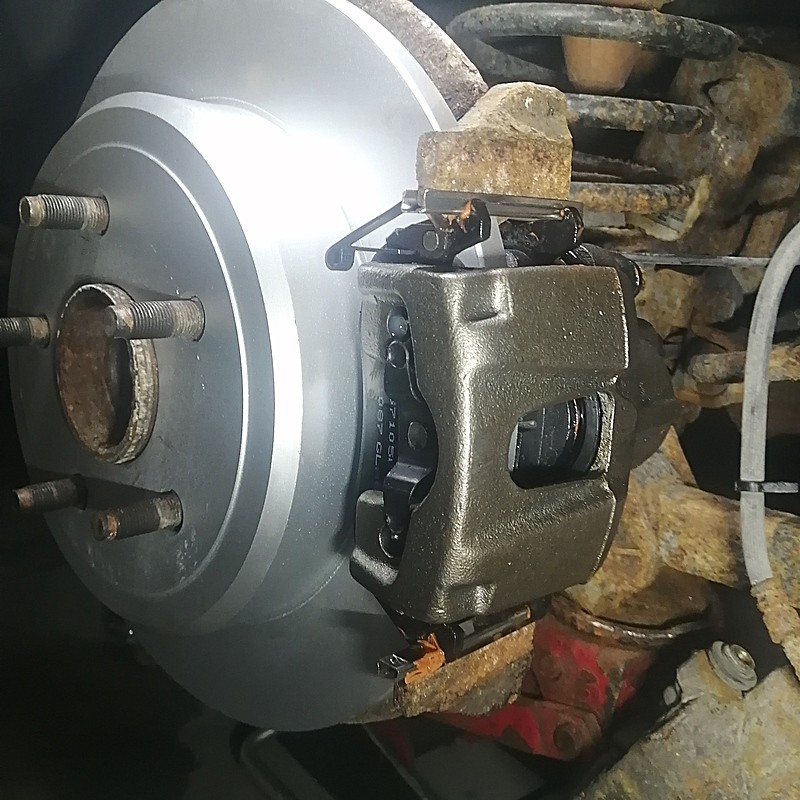
Credit: www.allrotors.com
Conclusion
To sum up, recognizing a seized brake caliper is crucial for your safety. Regular inspections are the key to preventing potential hazards. By being proactive and familiarizing yourself with the signs, you can save yourself from costly repairs and avoid dangerous situations on the road.
Stay informed and attentive to your vehicle’s performance.
A seized brake caliper can compromise vehicle safety and performance. It can lead to uneven braking, excessive brake pad wear, or even brake failure. Identifying this issue early is crucial for maintaining safe driving conditions and preventing costly repairs down the line.
We’ll discuss how to recognize the signs of a seized brake caliper and explore the potential causes and solutions for this common brake system problem. Understanding these indicators can help you take prompt action to address the issue and ensure your vehicle’s continued safe operation.
The Common Symptoms that Tells Brake Caliper is Seized
Identifying a seized brake caliper is crucial for maintaining safe driving conditions.
Here are some signs that may indicate a seized brake caliper:
-
Uneven Brake Pad Wear:
- Inspect the brake pads on both sides of the affected axle. Uneven wear, where one pad is significantly more worn than the other, could indicate a seized caliper.
-
Vehicle Pulling to One Side:
- If your vehicle pulls to one side when braking, it may be a sign that one brake caliper is not functioning correctly. A seized caliper can cause uneven braking, leading to the pulling sensation.
-
Hot Wheel or Brake Rotor:
- After driving, carefully touch the wheels and brake rotors. If one wheel feels significantly hotter than the others, it could be a sign of a seized caliper. Heat is generated when the brake is applied but not released properly.
-
Reduced Brake Performance:
- If you notice a decrease in braking performance or if the brake pedal feels spongy, it could be due to a seized caliper preventing the brake pads from making proper contact with the rotor.
-
Squeaking or Grinding Noises:
- Unusual noises, such as squeaking or grinding, while braking could indicate a problem with the caliper. This might be due to uneven pressure on the brake pads.
-
Vibration While Braking:
- A seized caliper can cause vibrations or pulsations in the brake pedal when braking. This can result from uneven braking forces on the rotor.
-
Brake Fluid Leaks:
- Check for brake fluid leaks around the caliper. A seized caliper may cause the brake fluid to leak from the caliper piston seal.
-
Stuck Brake Caliper Piston:
- If you can visually inspect the caliper, check if the piston is extending properly when the brake is applied and retracting when released. A piston that remains extended may indicate a seized caliper.
-
Visible Corrosion or Rust:
- Inspect the caliper for signs of corrosion or rust. External corrosion can lead to internal components binding and causing the caliper to seize.
-
ABS Warning Light:
- In some cases, a seized caliper might trigger the ABS (Anti-lock Braking System) warning light on the dashboard. This occurs when the system detects irregularities in wheel speed due to uneven braking.
If you observe any of these signs, it’s essential to address the issue promptly. A seized brake caliper can compromise your vehicle’s safety, and it’s recommended to have a qualified mechanic inspect and repair the braking system.

Credit: www.allrotors.com
Conclusion
To sum up, recognizing a seized brake caliper is crucial for your safety. Regular inspections are the key to preventing potential hazards. By being proactive and familiarizing yourself with the signs, you can save yourself from costly repairs and avoid dangerous situations on the road.
Stay informed and attentive to your vehicle’s performance.
